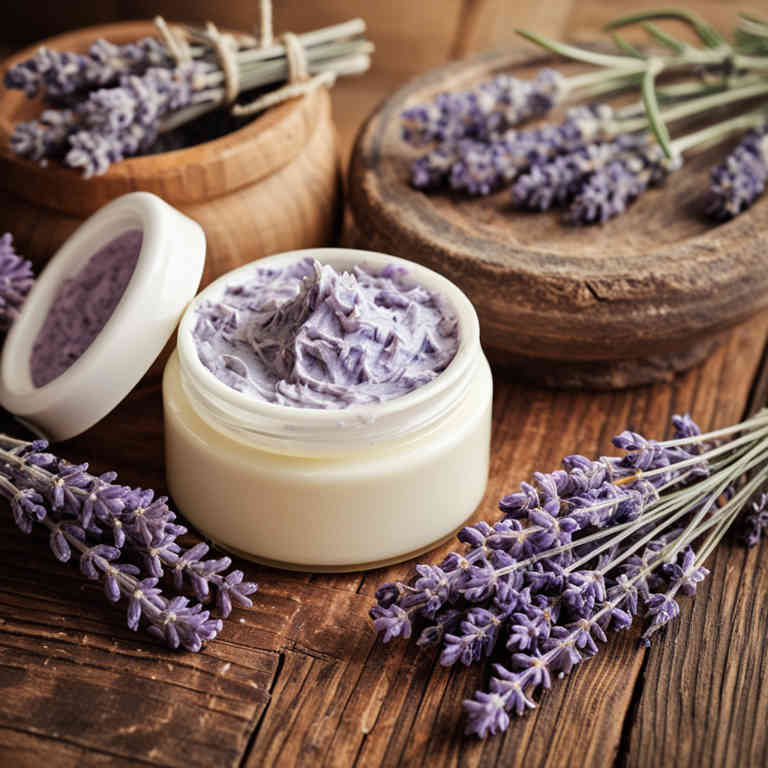Lavandula angustifolia cream for medicinal use

Lavandula angustifolia cream is a topical preparation made from the essential oils and extracts of lavender plants, known for their calming and soothing properties.
It is commonly used in herbalism to alleviate skin irritations, inflammation, and minor wounds due to its antimicrobial and anti-inflammatory effects. The cream may also help with stress relief and promote relaxation when applied to the skin or used in aromatherapy. It is often recommended for its ability to soothe conditions like eczema, burns, and muscle aches.
In traditional herbal practices, it is valued as a versatile remedy for both physical and emotional well-being.
Uses
Lavandula angustifolia cream has been used to soothe skin irritations and promote relaxation for centuries.
Historically, lavender was prized in ancient Egypt, Greece, and Rome for its calming and healing properties, often applied as a topical remedy. In traditional herbal medicine, it was used to treat wounds, insect bites, and as a natural remedy for anxiety and insomnia. Modern applications include its use in skincare products to reduce inflammation, moisturize the skin, and alleviate symptoms of eczema and psoriasis.
Today, it remains a popular ingredient in aromatherapy and natural cosmetics due to its soothing and antiseptic qualities.
Benefits
Lavandula angustifolia cream has health benefits such as promoting skin healing, reducing inflammation, and providing a calming effect.
This cream is often used to soothe minor burns, insect bites, and skin irritations due to its antiseptic and anti-inflammatory properties. The lavender scent also has a relaxing effect, helping to reduce stress and improve sleep quality. It is particularly beneficial for those with sensitive skin or conditions like eczema and psoriasis.
Overall, Lavandula angustifolia cream is a natural remedy that supports both skin health and emotional well-being.
Constituents
Lavandula angustifolia cream active constituents include lavandins, which are essential oils containing linalool and linalyl acetate, along with flavonoids, terpenes, and phenolic compounds.
These components contribute to the cream's calming and soothing properties. Linalool and linalyl acetate are known for their antiseptic and anti-inflammatory effects. The flavonoids may support skin health by reducing oxidative stress.
This herbal preparation is commonly used for its potential benefits in relieving skin irritation, anxiety, and promoting relaxation.
Preparation
To make Lavandula angustifolia cream, start by infusing lavender flowers in a carrier oil such as jojoba or coconut oil.
Heat the oil gently in a double boiler, add dried lavender flowers, and let it steep for 2 to 4 hours. Strain the oil to remove the lavender petals, then mix in beeswax and shea butter to create a creamy base. Once melted, pour the mixture into a clean container and let it cool and solidify.
This lavender cream is ideal for soothing skin irritations and promoting a calming effect.
Side Effects
Lavandula angustifolia cream may lead to skin irritation or allergic reactions in some individuals due to the presence of essential oils and other natural compounds.
It is generally considered safe for topical use, but excessive application or prolonged use may cause dryness or sensitivity. People with eczema or sensitive skin should use it with caution and perform a patch test before full application. In rare cases, ingestion of the cream can lead to gastrointestinal upset or more severe systemic reactions.
It is important to consult a healthcare professional before using this preparation, especially for those with known allergies or medical conditions.